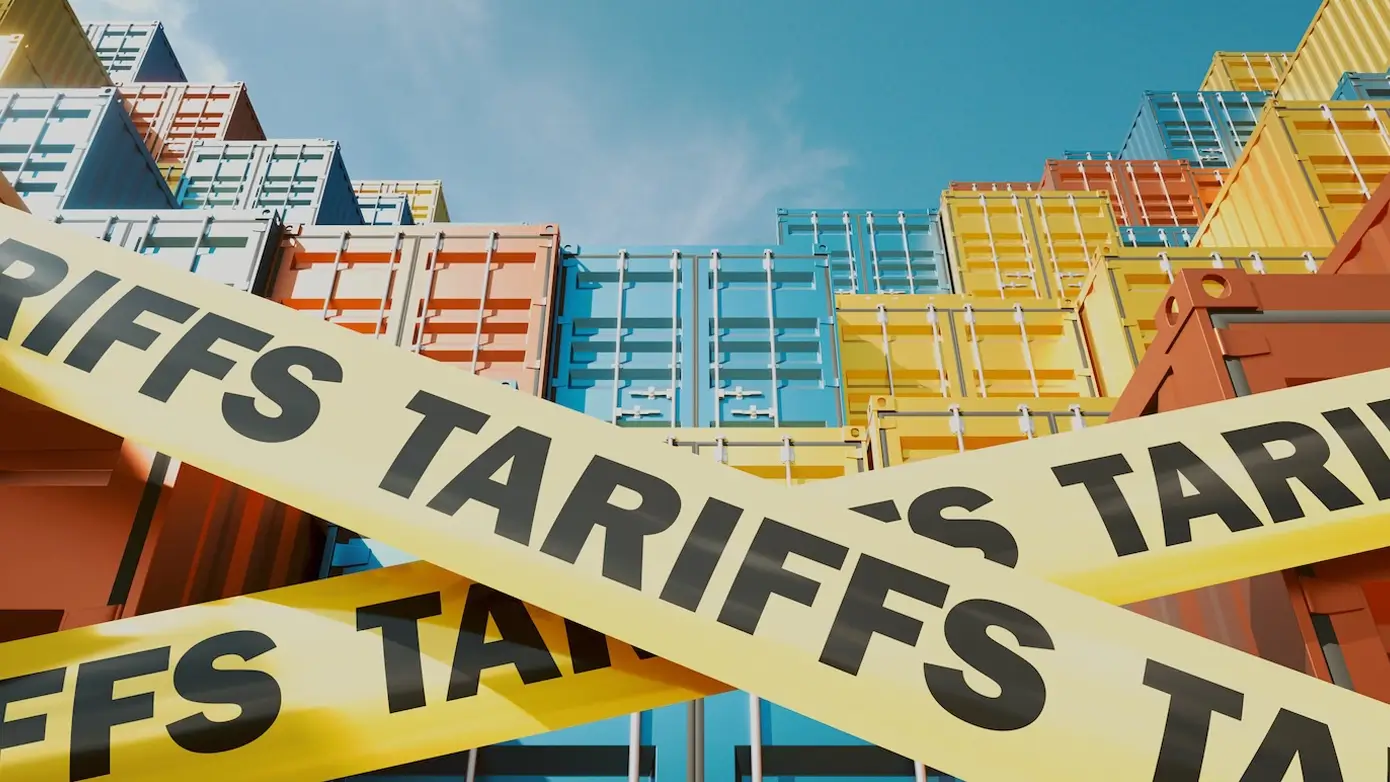Weathering the “Tariff Tornado”
A Supply Chain Perspective on Strategic Agility
- September 26, 2025
- Read time 3 minutes
Article in Brief
As global tariffs disrupt traditional logistics flows, the stakes for peak season planning have never been higher. Unified visibility, cloud-native agility, and real-time orchestration can enable supply chain operations to build resilient, high-performing logistics operations.
Global disruptions like tariffs are unavoidable—what matters is how quickly and effectively your supply chain can respond.
Transportation management must evolve beyond tactical moves to dynamic, real-time coordination across the entire network.
A single view of transportation, warehouse and yard operations enables faster, smarter and more collaborative decisions.
Modern, extensible, always-current systems allow businesses to adapt without downtime—and thrive in constant change.
A New Kind of Peak Season Disruption
In his recent article, The Supply Chain’s Silent Night: How Tariffs Threaten Holiday Shipping in 2025, industry analyst Bart A. De Muynck examines how new waves of tariffs are reshaping the peak season landscape, turning what was once predictable into a high-stakes exercise in strategic navigation. His insights capture a moment of inflection—where global uncertainty collides with logistical complexity, and the margin for error is thinner than ever.
As someone focused daily on solving real-world transportation challenges, I believe Bart’s perspective highlights a broader imperative: modern supply chains must be built for adaptability. The capacity to shift strategies in real time – without compromising performance or profitability – is a critical differentiator. This isn’t about simply reacting to disruption. It’s about enabling your network to operate through disruption, not around it.
From Execution to Orchestration
Historically, transportation management was centered on tactical execution—planning a route, booking a carrier, tracking a shipment. But the nature of logistics has evolved. Today, the focus must be on orchestration: the continuous synchronization of every shipment, rate, route, and mode across a dynamic and often volatile network.
That includes everything from long-range modeling and carrier sourcing to real-time execution and exception handling. In this environment, static plans become outdated almost as soon as they’re created. What’s needed is the ability to simulate and adapt continuously - based on live data, shifting constraints and evolving demand.

Why Unified Visibility Matters More Than Ever
Visibility plays a key role in this transformation, but it isn’t enough. True agility comes when visibility is unified across every function, from transportation and yard to warehouse, and connected to decision-making processes.
It’s one thing to know a port is congested or a shipment is delayed. It’s another to have the ability to proactively reroute inbound freight, prioritize fulfillment based on margin or service level, and shift labor where it will drive the most impact. In disconnected systems, agility is limited. But within a unified platform, businesses gain the ability to course-correct in real time to minimize downstream delays and protecting customer commitments.
Building Resilience
This level of operational flexibility isn’t achieved overnight. It requires foundational changes in how logistics systems are designed and deployed. Companies that have moved to cloud-native platforms—built on microservices and designed for constant change—are seeing the benefits today.
Their systems are always current, thanks to zero-downtime updates. They can extend and tailor applications to their businesses without touching the core code, which enables constant innovation. Most importantly, these organizations can unify all their supply chain functions in a single digital ecosystem, eliminating silos and unlocking new opportunities for coordination and optimization.
For example, a unified approach allows transportation planners to model scenarios in real time—testing how new tariffs, capacity shifts, or weather events will impact service levels or cost. These insights can then inform distribution strategies, appointment scheduling, and fulfillment logic. The end result is not just resilience, but performance that improves under pressure.
Preparing for a Complex Holiday Season
As we head into another holiday shopping season, one thing is clear: complexity isn’t going away. But companies do have the power to respond.
Those that embrace strategic agility—powered by modern technology and unified operations—will be best equipped to navigate tariffs and other variables. They’ll move faster, adapt smarter, and serve customers more consistently, even when the ground is shifting beneath them.
Disruption may be inevitable. But with the right foundation, it doesn’t have to be paralyzing. It can be an opportunity to rise above the chaos and lead.
If you haven’t already read Bart’s full article, I encourage you to do so. It’s a timely and thoughtful look at the economic pressures shaping supply chains this season—and a reminder that agility isn’t just a feature. It’s a strategy.







